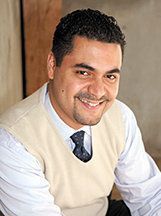In a landmark development, Blue Cross Blue Shield (BCBS) has reached a $2.8 billion settlement to resolve antitrust claims brought by health care providers, including chiropractors. The lawsuit accused BCBS of dividing the nation into exclusive regions and limiting competition, which resulted in lower reimbursements for providers. Although BCBS denies any wrongdoing, the company agreed to the settlement to avoid lengthy litigation – and you can get a piece of the pie.
Home Sweet Medical Home
While the Affordable Care Act (ACA) has received its fair share of praise and criticism since its adoption, few question the value of its emphasis on collaborative, patient-centered health care. The ACA encourages the formation of cooperative relationships between health care providers and related entities to provide optimal patient care that improves outcomes while reducing costs, among other benefits.
The Atlanta Spine Center has capitalized on that opportunity by networking with local multidisciplinary entities to participate in a patient-centered medical home (PCMH). In this exclusive interview with Roberto Vargas, DC, learn more about how the center functions within the PCMH and how doctors of chiropractic can follow in the center's footsteps in collaborating with like-minded health care providers to benefit patient care.
Q: Why did Atlanta Spine Center choose to participate in a PCMH?
A: The patient-centered medical home is a model which puts patients at the center of the health care system and provides primary care that is accessible, continuous, comprehensive, family-centered, integrated, coordinated, compassionate and culturally effective. There is currently a shift developing within the traditional American health care model toward a more cost-effective, all-inclusive and integrated approach. Accountable care organizations (ACOs) and PCMHs are at the heart of this shift, with the Affordable Care Act being the driving force.

Whether you like it or not, the ACA is here to stay and we must adapt. If you haven't noticed, private primary care practices are being absorbed by big hospital systems and chiropractic offices are finding it difficult to go about business as usual. The increasing cost of running a private practice of any kind is an Achilles heel for most. Decreased reimbursement rates, increased premiums and a decrease in covered services are affecting the medical and chiropractic communities alike.
Unfortunately, the successful small private practice is a dying breed. The health care world is changing drastically and we must evolve with the times. I view this new landscape as opening up fresh avenues for an MD / DC collaboration, which can benefit everyone and is a great alternative to hospital-based primary care practices.
Chiropractic care is a natural fit for PCMHs and ACOs due to its cost-effectiveness, [and the fact that it is] high-quality conservative care. High patient satisfaction makes DCs attractive to ACOs and PCMHs, with many Americans seeking complementary, nonpharmacological approaches. As DCs, we should be open-minded and put our best foot forward toward a model which, under the right setting, can demonstrate our unique skill set in improving patient outcomes.
Most MDs, especially primary care physicians, have little to no idea about our abilities, training or education. Only through exposure and co-management of patients do they begin to understand what we have to offer the health care community. This should be a primary objective of every chiropractic practice.
Our goal at the Atlanta Spine Center has always been to provide the most effective conservative treatment options to those suffering from disorders of the spine and neuromusculoskeletal system. We are a practice of chiropractors, massage therapists and acupuncturists who have made a conscious effort to look for medical practitioners with similar values to our own. It was through these efforts that we came across a PCMH and a referral relationship began with AbsoluteCARE Medical Center and Pharmacy in Atlanta, Ga.
Q: What steps did you need to take to get involved in this new model of care?
A: AbsoluteCARE Medical Center had tried to incorporate chiropractic care in the past, with less-than-favorable results. There was never an effort to educate the providers on the benefits of incorporating chiropractic care into their model. Lack of communication and follow through were to blame – and most importantly, the chiropractor was not the first to start the referral process.

We follow the philosophy that one must be the first to show the willingness to extend the open hand. I had stumbled upon their practice while out to lunch on an October afternoon; we offered to provide lunch to their practice and an opportunity to speak to the providers. The initial meeting was positive, but the hard work had just begun.
At Atlanta Spine Center, we made it our primary objective to refer as many chiropractic patients looking for primary care services to AbsoluteCARE. Chiropractic patients are most often the first to share their personal stories on the benefits of chiropractic and they were the vehicle by which the open line of communication began. We referred half a dozen patients in the first two months and the AbsoluteCARE providers began to refer some patients to our practice. We provided treatment plans to the referring physicians, exceptional care, personalized attention and a down-to-earth approach to health care.
Many physicians believe that all a chiropractor does is manipulate/adjust the spine (and some DCs [do] only manipulate/adjust; this type of chiropractic practitioner may not bode well in this type of environment). The DC's license, with appropriate certifications, allows us to provide physiotherapeutic modalities and rehabilitative services to our patients. When physicians understand that yes, we adjust/manipulate joints, but we can also provide more services, it begins to break down their preconceived notions. They begin to understand that the chiropractor can diagnose neuromusculoskeletal disease, refer to a specialist or diagnostic imaging when appropriate, and treat with a variety of therapeutic services – all with high patient satisfaction.
After a year of this professional relationship, the CEO and COO of AbsoluteCARE requested a meeting with me and my business partner, Dr. Vicky Yarns, who founded the practice in 1996. This meeting was an invitation to provide our services to their patients under the umbrella of their PCMH. The invitation was a surprise, but we gladly accepted to join their efforts in providing exceptional, integrated care to the Atlanta community.
We held "lunch and learns," demonstrated our passion to serve our fellow mankind and eagerness to work side by side with the AbsoluteCARE team. We made them privy to our relationships with neurosurgeons, physiatrists and orthopedic spine surgeons. (It is in your best interest to make members of your health care team aware of your network of professional relationships.)
We conducted demonstrations to make all the providers at the PCMH aware of exactly what it is we do - and our limitations. Extremity adjusting, manipulation, stretching, physiotherapy and trigger-point therapy were displayed in an open forum, with discussion encouraged. Eventually, some of the providers themselves participated.
Simply said, a willingness to participate in a whole-body integrated approach in which everyone contributes to the best interest of the patient is what helped us be a member of a PCMH.
Q: What other practices / organizations are involved in your particular PCMH?
A: The PCMH began with AbsoluteCARE Medical Center and Pharmacy's roots as an infectious disease clinic. With a well-established clinic already incorporating a fully staffed pharmacy, nutritional services and laboratory, other pieces started to fall into place. The laboratory services began to include Quest [Diagnostics] and their phlebotomist. AbsoluteCARE Medical Center also expanded to include primary care services, but their vision to become a PCMH had just begun.
Oakhurst Medical Centers were included to provide mental health services. Their psychologist, counselors, nurse educators and social workers aided in the mental, emotional and social well-being of the patients, Atlanta Spine Center followed with complimentary services such as chiropractic, massage and acupuncture. After-hours, the clinic becomes an urgent care center staffed and managed by the local ER doctors of Peachtree Urgent Care.
All the health care providers refer to one another, with the ultimate goal being the total care of each and every patient's specific needs. Patients enjoy the "one stop shop" approach and the convenience factor. The total is greater than the sum of its parts in this case. Everyone wins, cost is kept low, and with close quarters comes open discussions of a patient's health care needs. Information is shared, decreasing the probability of ineffective treatments or poor management of a condition. The mental health practitioners share concerns with the primary care physicians, whose referral to the chiropractor for chronic lower back pain improves the patient's depression and outlook. Again, it's all about everyone working together.
Q: How does your practice operate differently than if you were not part of a PCMH with regard to patient care, financial considerations, etc.?
A: As mentioned in my previous response, there are a number of independent entities under the PCMH umbrella. Every health care group has its own arrangement. I am not privy to specifics regarding others, but I can share the Atlanta Spine Center story. There is not much difference between our main office and the effort which is part of the PCMH. We pay rent for four rooms consisting of chiropractic adjusting, massage therapy, physiotherapeutics and acupuncture. Our expenses are kept low in order for us to make some considerations for certain patients of the PCMH who would otherwise have no chiropractic, massage or acupuncture coverage.
The objective of the PCMH is to give high-quality, low-cost health care, and this is the way we meet those goals. There are referrals from every independent group within the PCMH and these patients range from self-pay, major medical, Medicare / Medicaid and personal injury. No one is denied care and some pro bono cases due to economic hardship are part of the deal. At the end, we can serve a larger population with unique circumstances and conditions.
Patient care is generally initiated from referrals through the primary care, infectious disease or urgent care entities, but referrals have come from every aspect of the system. In order to meet the integrated, comprehensive and coordinated goals of the PCMH, the system has been set up such that every pain patient and neuromusculoskeletal complaint is managed or incorporated into the conservative options provided by the Atlanta Spine Center. The MDs / DOs may provide medication for specific complaints, but a referral for chiropractic, massage, acupuncture or rehabilitative service is also part of the prescription.
These goals are enforced from the top down. They begin from the office of the CEO and are recommended in provider meetings and through demonstrations, as well as physician discussions. The DCs are also part of a general station where primary care physicians and nurses handle administrative duties. Sitting next to one another allows providers to further strengthen the goals of collaboration. These close quarters make it easier for better management of each patient's health care needs. We can easily scan progress reports, advanced imaging findings or referrals into the PCMH system by walking over to the patient's corresponding nurse's desk. It is an open-concept space that encourages a team approach.
Q: How does this arrangement benefit your practice, your patients and chiropractic / health care in general?
A: Our patients are diverse and often have additional problems beyond what brings them to our office. When MDs, DCs and other health care providers work in unison, a healthy patient is the accolade. A proper referral or simple follow-up phone call is not only good for business, but also a great way to practice. The patient, as would you, appreciates the health care provider following through with referrals and offering co-management options. People inherently understand that treating the person as a whole is in their best interest.
Every health care provider should practice to the pinnacle of what their discipline allows for the benefit of the patient. By educating and offering individuals options, the patient becomes an integral part of the decision-making process. Being able to offer more than chiropractic, the Atlanta Spine Center is able to address multiple health issues we were not able to in the past. We start with conservative means and then progress from there to include more invasive types of procedures if necessary, never alienating any specific medical or health care professional. Everyone can bring something to the table.
Chiropractic is in a very unique position. The PCMH is a great model in which we can demonstrate our skills to a variety of medical professionals. We as chiropractors know we have the tools necessary to treat a variety of ailments with excellent results. There will be more scrutiny of expensive, ill-effective treatment options under the new health care system, and expensive pharmacological and surgical options are not attractive to ACOs and PCMHs. The goal of the PCMH model is to lower patient costs and there is usually incentive to do just that.
A PCMH or ACO may have an in-house pharmacy, which is very convenient for patients. If a patient can get good results from supplements or herbs and avoid pharmaceuticals, great. That would be the ideal situation. However, it's not always possible. Drug therapy is not inherently bad and many people need pharmacological intervention. Chiropractic may be a great complement to pharmacological approaches, and the patient can respond better when the two are combined, as opposed to if one or the other were used alone.
In addition, a medical practice with an onsite pharmacy can put itself at risk by prescribing large amounts of Class 2 narcotics. If these patients are also under the care of a chiropractor, there is evidence that the practice is trying conservative treatment and thus decreasing the possibility of drug seekers. The MD and DC can work together to provide effective treatment and prevent drug dependency. This is just one of the many benefits to a collaborative and integrative effort.
Q: How can doctors of chiropractic participate in a PCMH? What can they do to be proactive in their community?
A: We encourage DCs to initiate dialogue with local PCMHs that do not provide complementary or rehabilitative services. Stop by, introduce yourself and start referring patients to their system. Educate the providers on your strengths and limitations. Make them aware of the cost savings of introducing chiropractic services to their model. The Foundation for Chiropractic Progress has great materials on chiropractic care in a PCMH. Acquire these materials and use them as a resource for dialogue and evidence-based discussions. â?©Let them know that you're a team player. When they begin to refer patients, provide exceptional and personalized care. Pick up the phone and call the patient's primary care physician when there is a concern regarding their care. Offer “lunch and learns” as a way to address any concerns or preconceived notions. Extend an open hand and treat other health care providers as colleagues, not competi-tors.
We're all in the same business of helping our fellow man. Show them your commitment to just that by spearheading efforts to provide comprehensive, integrative and coordinated care. The general public often asks about chiropractic care and is inquiring about the benefits, so try to be that bridge between their primary care doctor and chiropractic. Nobody likes a know-it-all, but the general MD population doesn't know what you have to offer.
This country is heading toward integration. The Affordable Care Act has introduced millions more into a health care system that needs our skill set. Let's not be left behind, especially when what everyone is looking for is something the chiropractic profession has always provided: effective, low-cost health care with high patient satisfaction. Everyone is asking for our services. Let's take the ap-propriate steps to make it accessible.
Dr. Vargas graduated from Life University and practices at the Atlanta Spine Center with fellow Life University graduate Dr. Vicky Yarns, who founded the center in 1996. For more information, click here.



